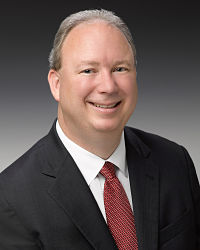 Michael P. Melaniphy is president and chief executive officer of the American Public Transportation Association (APTA) and president of the American Public Transportation Foundation. Melaniphy’s entire career has been in public transportation, with more than 30 years of both public and private sector leadership experience.
Michael P. Melaniphy is president and chief executive officer of the American Public Transportation Association (APTA) and president of the American Public Transportation Foundation. Melaniphy’s entire career has been in public transportation, with more than 30 years of both public and private sector leadership experience.
Melaniphy serves on the Executive Committee of the Transportation Research Board, as well as on the boards of both RailVolution and the Transportation Learning Resource Center. He is a commissioner on the Alliance to Save Energy’s Commission on National Energy Efficiency Policy. He serves on the boards of various universities, including the Mineta Transportation Institute at San Jose State University, the National Center for Transit Research at CUTR – University of South Florida, the Institute of Transportation Studies, University of California – Davis, and NURail, University of Illinois at Urbana-Champaign. Melaniphy is a member of ITS America’s Board of Directors and its Executive Advisory Council and he also is a member of the Leadership Council of the National Center for Sustainable Transportation.
The Good News About the FAST Act…
First of all, I think it was a very good bill, and to have the first long-term surface transportation bill since 2005 certainly benefits the country. The FAST Act fully funds a five-year authorization period for federal transit programs with revenues for the mass transit account and the Highway Trust Fund…The other thing that’s very beneficial is that we’ve got an increased investment in bus and bus facilities…and we’re increasing funding for urban and rural programs, for State of Good Repair, and for New Starts.
…and the Bad News
Certainly the overall funding was less than APTA had sought, and it’s unlikely to provide sufficient resources to fully address the one-time, $87-billion backlog and State of Good Repair, which we all know is so critical—to have safe, reliable, dependable service year-in, year-out. And the lack of a sustainable funding mechanism certainly is a challenge…And of course the bus and bus facilities’ funding was not restored to the pre-MAP21 levels, so we’re going to continue to see shortfalls there and at the end of the five-year bill we’ll be about 82% of where we were before MAP21.
Our Infra Systems Are Fragile
We have a lot of legacy systems. Let’s not forget that systems like New York, Boston, Philadelphia, Chicago—we’re running some of these systems over 100 years old. There are components on there that are much older than the people that are working on them, and the companies that supplied them no longer exist. And as we’ve seen in things like Superstorm Sandy or the big snow storm in Boston last year, our systems are very fragile and as we push them to the limit, as we look at things like resiliency to tolerate storms or other major influxes of impact on our systems, they simply don’t have that capacity because they are strained to the limits.
We Need Choices
As a kid growing up you had a binary choice: you were either a bus kid or you were a car kid. You were one of the two. And you look at today’s environment and it’s a multi-modal environment. We have evolved as a society to understand that now it’s about mobility choices. And it is very common to take a shared-use car, a bike, a rental car, a trolley, a streetcar, a subway, all in the same week…So as we look at what are the best utilizations of our scarce resources in a community, people are looking at the full assortment of choices, and as we look at the unbelievable growth that’s going to come in the population set of this nation we’ve found that paving our way to a solution is not the best choice.
High Speed Rail Could Transform the United States
We’re a big believer in high speed rail as one of the modal choices for this nation…There are a multitude of nations around the world that for as long as 50 years have been operating high speed rail very effectively. It’s an area that we need to do some catch-up in order to give our communities a better array of choices. You go to Spain and you look at communities that are 150 miles away are literally just a suburb…When you look at how that changes the landscape and the utilization of the resources for the community it’s transformative. It transforms people’s lives.
APTA: Ready for the Future of Transit
APTA’s actually been around since 1882, back when the jitneys were drawn by horses. And so if we look at the future here, as I remind my staff often, there was a time at one of our board meetings where somebody said, “you know, I think this engine thing might take off, and so we’ve got to adapt our association for the replacement of horses.” And we’re in another one of those pivotal times now as we look at the influx of shared mobility and new technologies coming into our space, and I think APTA is going to be strong and a good player in that for many years to come.
Download full transcript (PDF): Michael Melaniphy on The Infra Blog
Tags: 2015 Transportation Act, American Public Transportation Association, APTA, FAST Act, Michael Melaniphy, Transportation Act 2015






 RSS Feed
RSS Feed